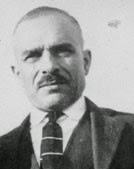 |
| Tatos Cartozian Oregon Historical Society |
I usually zip through the opinion pages of the New York Times, but a
headline on a recent column by Nicholas Kristof stopped me cold: When Whites
Just Don't Get It.
Kristof noted that many white people say they're fed up with
coverage of events in Ferguson, Missouri, where a white police officer shot and
killed a young black man he suspected of shoplifting.
The shooting was followed
by demonstrations, which were followed by looting. Teenagers with cell phones used
social media to post dramatic images that would never get past jittery editors.
As a result, the story was driven faster and farther by YouTube, Twitter and
Instagram than by newspapers and TV.
Cable networks did their best to catch up
by filling air time with speculation, commentary and guesswork presented as
expert opinion. A common theme was that events like those in Ferguson would be
less frequent if we could have national conversation about race. Then we’d all
understand each other much better.
Kristof echoed this sentiment. His column offered
a grab-bag of factlets about income, crime and education to argue that blacks
have serious grievances that white people should listen to, and respond to, for
the good of the country.
What struck me about this two-sided conversation idea was
the outdated premise. This just isn’t a starkly divided black-white country any
more. According to the last census in 2010, non-Hispanic white people accounted
for an all-time low 64 percent of the population. Blacks were just under 13
percent.
That means a whole lot of people—nearly one in four—simply don’t stand clearly on either
side of what we consider America’s racial divide.
In fact, many more never did.
This
was driven home when I was researching the Armenian experience in America and
came across the federal government’s attempt to keep America white by shutting
Tatos Cartozian out.
Cartozian was an Armenian immigrant who settled in Oregon.
He became a naturalized American but the federal government tried to
revoke his citizenship. It accused him of falsely claiming to be a white man. The
back story to Cartozian’s 1924 federal court case fascinated me.
Way back in
1790, George Washington signed a law limiting naturalized citizenship to white
people. The law didn’t define white except by noting that the term was commonly
understood, which was certainly true when nearly everyone on the continent was
either of European or African descent except the Indians. As America grew, so
did the challenge of deciding just who was white.
Immigration clerks squinted
harder and harder throughout the 19th century as they looked up at the
swarthy faces of Italians, Spaniards and Jews. It was left to the courts to assign
each ethnicity a place on the American color chart.
Armenians were among the
final ambiguities. Look at us and you’ll see why. Our history of invasion,
subjugation and migration has produced a rich palette of skin tones as well as a
wide variety of facial features.
So the Cartozian case involved testimony from
anthropologists, historians and certifiably white Americans who testified that
Armenians displayed the character traits of white people even if they didn’t
always show the physical traits.
Cartozian won. That decision was a big legal
step forward for Armenians who’d had no right to citizenship or any legal
protection at all in the land of their ancestors.
But what does it mean today?
In the narrowest sense, it means I am considered a white man. So is Kristof,
whose father was an Armenian from Poland. Their family name was originally
Hachikian.
In a broader sense, it means I am invisible. My identity is smudged
into that 64 percent majority, along with Greeks, Turks, Arabs and so many
others who look nothing like Astors or Vanderbilts.
Unlike Hispanics and
Asians, who are far more numerous, Armenians have no minority status. No
special protection, no preference, no affirmative action—not even a box to
check on the census form.
The reality of America is that all of us identify
ourselves—and are identified by others—in many ways. Yet we also share a common
identity that binds us into a nation. No matter the number, the shrinking white
majority is an artificial construct as well as an anachronism and I refuse to
let it define me.
So while I have no objection to a national conversation about
race, it can’t be two-sided or there will be no place for me and millions of others.

An interesting perspective, too often forgotten amid name calling. Perhaps there is a way for this complexity to lead us forward more gently, once it is acknowledged.
ReplyDelete